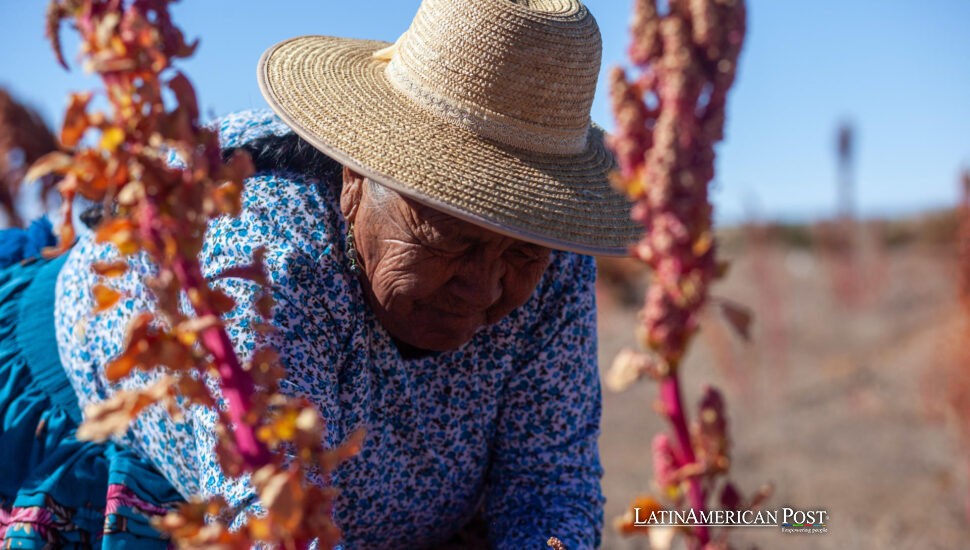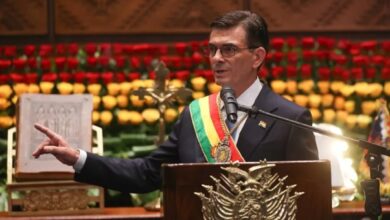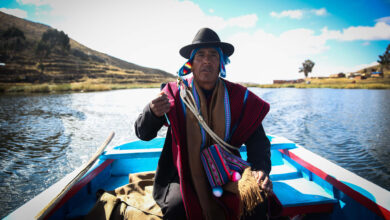Bolivia’s Royal Quinoa: Treasuring a Global Culinary Marvel

Bolivia’s royal quinoa develops in challenging situations on the large salt flats. Local communities plus cooks across the globe value the hardy seeds. The seeds show the long-lasting ability to recover and the great capability of this old crop, as recently reported by EFE.
Harvesting Resilience in the Harsh Altiplano
High in Bolivia’s Andean plateau—more than 3,600 meters above sea level—stretches the glittering salt expanse of the Salar de Uyuni. Spanning over 10,000 square kilometers, this otherworldly desert of salt frames a landscape that appears inhospitable to most forms of life. Despite the frigid winds and mercurial temperature swings between day and night, one crop not only survives here but thrives: quinua real, or royal quinoa.
Local communities of Aymara and Quechua heritage have cultivated royal quinoa for generations, marveling at its ability to adapt to the barren plains at the edge of the salt flats. The grain’s majestic moniker arises from its larger size compared to other quinoa varieties, and its higher nutritional value has earned it the title of “superfood.” Packed with protein, minerals, and a distinctive taste that is less bitter than other quinoa strains, royal quinoa is central to both local diets and the global health-food market.
Farmers in communities close to the Salar de Uyuni are proud about the grain’s superior quality resulting from the harsh environment along with that it develops a hardy character along with a specific taste. Guadalupe Ramos, a farmer from Jirira, Oruro Department, cultivated her land for fifty years. Approaching eighty years, she claims that consuming royal quinoa daily contributes to her sustained vigor. From soups and cakes to breads and refreshing drinks, she finds endless ways to incorporate grain into her cooking.
The vibrant hues of the maturing quinoa fields—ranging from deep crimson to golden yellow—offer a dramatic contrast against the white salt crust and sparse grass. During the rainy season, water collects across the salt flats, creating a mirrored surface that reflects both the sky and the bright red quinoa stalks. Tourists visiting the Salar de Uyuni often find themselves captivated by this surreal panorama, where one of Earth’s harshest environments sustains a grain of remarkable resilience.
Guardians of Ancient Legacy
Quinoa’s presence in the Bolivian Altiplano goes back many years. Some historians think early communities respected the grain well before Spanish explorers arrived. Its importance as a food item plus a sign of culture is still apparent. By 2014, the Andean Community of Nations—comprising Bolivia, Peru, Colombia, and Ecuador—formally recognized Quinua Real del Altiplano Sur de Bolivia with a designation of origin. This status protects the authenticity of the grain and cements Bolivia’s claim as its principal global producer, accounting for about 55 percent of the world’s royal quinoa supply.
Bolivian farmers’ commitment supports the recognition. At Jirira, youthful cultivators like Eddy continue family practices, gaining knowledge from experienced people such as Guadalupe. A large amount of gathered quinoa goes as seed to cultivators in other sections of the highlands. This action widens the crop’s genetic line. This action guarantees a wide distribution for this particular strain. Though modern innovations have found their way into the farming process, many growers still rely on customs passed down through generations—sowing schedules tied to lunar cycles, natural fertilizers, and close monitoring of the mountain weather.
These communities also safeguard quinoa’s cultural significance, passing along traditional recipes and preparation methods. Quinoa’s versatility in cooking is legendary: whether boiled for a wholesome soup, ground into flour for bread and pastries, or even brewed as a nutrient-rich beverage, its potential seems boundless. The crop’s mild flavor and lower level of saponins, a naturally occurring protective coating that imparts bitterness, make royal quinoa especially appealing to those who may find other quinoa varieties too pungent.
In addition to feeding local families, royal quinoa has taken on broader economic importance. Bolivian authorities encourage sustainable cultivation practices and organic certifications, hoping to maintain the unique qualities of the grain while expanding international demand. Royal quinoa has nutrients, plus it can be used in many ways in cooking. This has made people who think about health want it. The income of small farmers has grown. The relationship between old ways and new business has been shown.
From Local Tables to World-Class Kitchens
Recent efforts to elevate royal quinoa’s profile have drawn internationally renowned culinary figures to remote Andean communities. A group of chefs from the “Indigenous and Native Cuisines Project,” supported by funding from the U.S. Embassy and the noted Bolivian restaurant Gustu, traveled to Jirira to witness quinoa’s journey from field to plate. Among them was Sean Sherman, a celebrated chef of the Oglala Lakota Sioux nation in the United States and one of Time magazine’s 100 most influential people of 2023.
Guided by Guadalupe Ramos, Sherman, and his peers learned how locals manage the labor-intensive harvest and separate the grains from their husks. They then joined forces in the kitchen, transforming freshly gathered quinoa into dishes that merged Bolivian and Native American culinary traditions. Chefs used current methods plus old practices. They showed how quinoa works in many dishes. These dishes go from thick soups and baked meals to fancy main courses for expensive restaurants.
Projects join farmers like Guadalupe, who protected the quinoa’s heritage for many years. They work with cooks who want to make local foods known around the planet. Observers note that this collaboration bolsters awareness of Bolivian heritage while demonstrating how a superfood can unite diverse communities through shared respect for sustainable practices.
Looking ahead, the success of royal quinoa hinges on balancing expansion with authenticity. Bolivia’s declaration of origin confirms that only quinoa grown in its southern highlands receives the “royal” label. This protects farmers from fake or weakened products from other nations.
Also Read: Argentina’s Currency Overhaul: A Gamble with Global Repercussions
As the global demand for quinoa rises, farmers plus policymakers must change with more review of environmental effects and equitable labor methods. Around the Salar de Uyuni, fields produce a grain that is more than just food. Each harvest shows cultural tradition, community strength, and natural beauty. In many ways, royal quinoa stands as a testament to human ingenuity—proof that, with knowledge handed down over generations, even the stark emptiness at the top of the world can cradle life’s most nourishing treasures.




